Earlier this week, Universe Today challenged North American readers to spot the slender, exceptionally “young” crescent Moon on the evening of New Year’s Day.
Three visual athletes based in Arizona took up the challenge on Wednesday evening, with amazing results. Mike Weasner, Rob Sparks and Jim Cadien managed to spot the razor thin crescent Moon just 13 hours and 48 minutes after it passed New phase earlier on January 1st. The sighting was made using binoculars, and they even managed to image the wisp of a crescent hanging against the desert sky.
This is a difficult feat, even under the best of conditions. Weasner and Sparks observed from Mike’s Cassiopeia observatory based just outside of Oracle, Arizona.
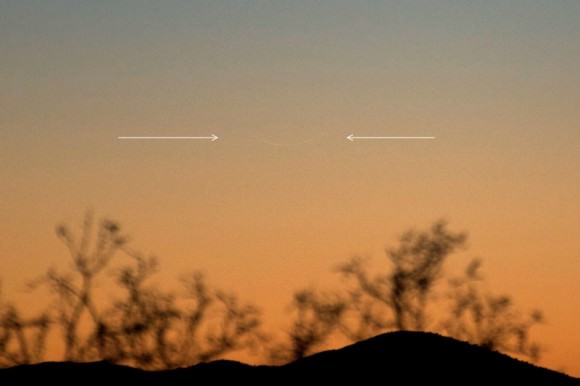
Concerning the feat, Weasner wrote on his observing blog:
“At 1800 Mountain Standard Time (MST), Rob reported that he had located the young Moon using his 8×42 binoculars. At 18:02 MST, I picked it up in the 12×70 binoculars. With the New Moon occurring at 11:14 Universal Time (UT), my observation occurred with the Moon only 13 hours and 48 minutes old. A new record for me (and Rob and Jim as well). Our DSLRs were clicking away!”
We can personally attest to just how hard it is to pick out the uber-thin crescent Moon against the twilight sky. Low contrast is your enemy, making it tough to spot and even tougher to photograph. Add to that a changing twilight sky that alters hue from moment to moment.
Though this isn’t a world record, its close to within about two hours. The youngest confirmed Moon spotting using binoculars stands at 11 hours and 40 minutes accomplished by Mohsen G. Mirsaeed in Iran back in September 7th, 2002, and the youngest Moon sighted with the unaided eye goes to Steven James O’Meara in May 1990, who spotted a 15 hour 32 minute old crescent.
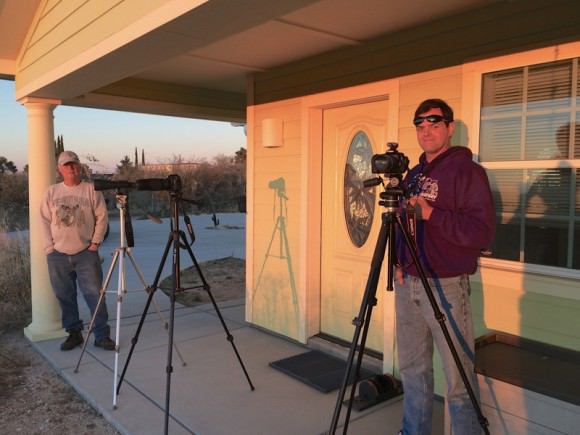
And of course, you can see the Moon at the moment of New during a a solar eclipse. Unfortunately, no total solar eclipses occur in 2014, just an usual non-central annular eclipse brushing Australia and Antarctica on April 29th and a deep 81% partial eclipse crossing North America on October 23rd.
Weasner also noted that a bright Venus aided them in their quest. It’s strange to think that Venus, though visually tiny, is actually intrinsically brighter than the limb of the Moon, owing to its higher albedo. In fact, some great pictures have also been pouring in to Universe Today of Venus as it heads towards inferior conjunction this month on January 11th. And don’t forget, that quoted magnitude of the lunar crescent (about magnitude -3.4) was also scattered along the lunar disk which was only 0.4% illuminated, and subject to atmospheric extinction to boot!
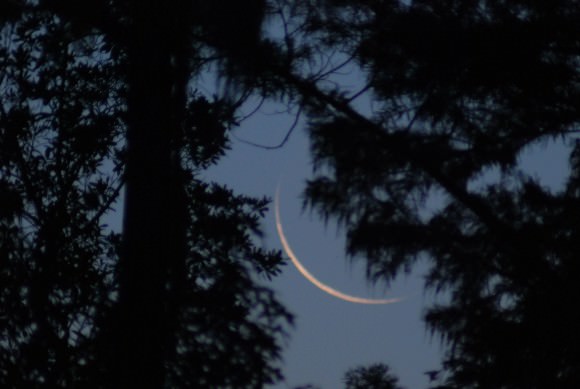
And yes, it is possible to catch the Moon photographically during a non-eclipse at the moment of New phase. The Moon can wander up to 5 degrees – about ten times its average apparent diameter as seen from the Earth – above or below the ecliptic and appear a corresponding distance from the limb of the Sun. Unlike many moons in the solar system, Earth’s moon has a fixed inclination to our orbit (as traced out by the ecliptic,) not our rotational axis. Thierry Legault accomplished this challenging photographic feat last year. Of course, this should only be attempted by seasoned astrophotographers, as aiming a camera near the Sun is not advised.
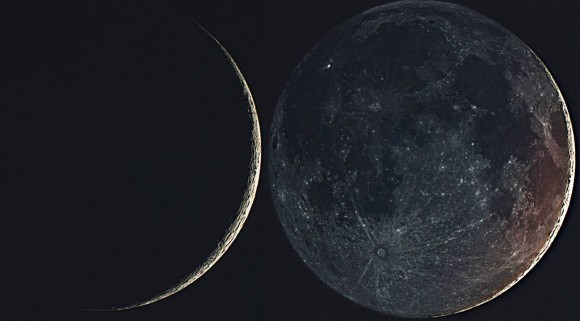
Why attempt to spot the razor thin New Moon? What’s the benefit? Well, several lunar based dating systems, such as the Islamic calendar, rely on the spotting of the new crescent Moon to mark the beginning of a new month. Being strictly lunar-based, the Islamic calendar moves an average of -11 days out of sync each year versus the modern day Gregorian calendar. On some years, there can even be a bit of ambiguity as to exactly when key months such as Ramadan will begin based on when the Moon is first sighted.
Also, such a feat demonstrates what the human eye is capable of when pushed to its physiological limits. In fact, French astrophysicist Andre Danjon theorized that the lunar crescent is formed at about 5 degrees elongation from the Sun, a point beyond which a lunar crescent can be sighted — usually quoted at about 7 degrees elongation from the Sun — and has become known as the Danjon Limit. Danjon also gave his namesake to the characterization of total lunar eclipses by color and hue, known as the Danjon Number. Accounting for the motion of the Moon, this places the theoretical limit that the forming crescent can be sighted with optical assistance at just over 11 hours.
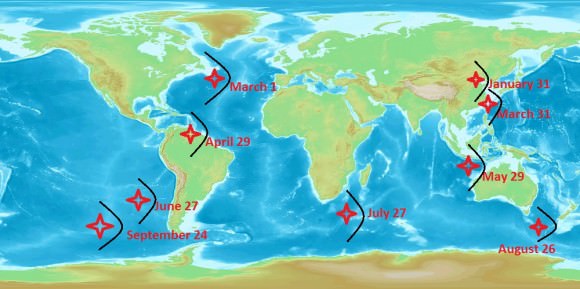
And you don’t have to wait until the Moon passes New… a similar attempt can be made in the dawn skies as the waning crescent Moon slides towards the Sun at the end of each lunation.
But perhaps the true reward is simply catching a glimpse of the ethereal for yourself, a delicate and airy Moon clinging briefly on the horizon. Kudos to Mike and Rob on a great catch!
Follow the further adventures of Mike Weasner and Rob Sparks on Twitter as @mweasner & @halfastro.
Wonder what the sighting opportunities are for the next waxing crescent Moon are worldwide? Two great online resources are the HM Nautical Office’s Einstein Moonwatch Project and Moonsighting.com.
The South African Astronomical Observatory also maintains a site with predictions worldwide.


And from the northwest corner of a brand new crescent moon, crickets and cicadas sing a rare and different tune… (J. Garcia)